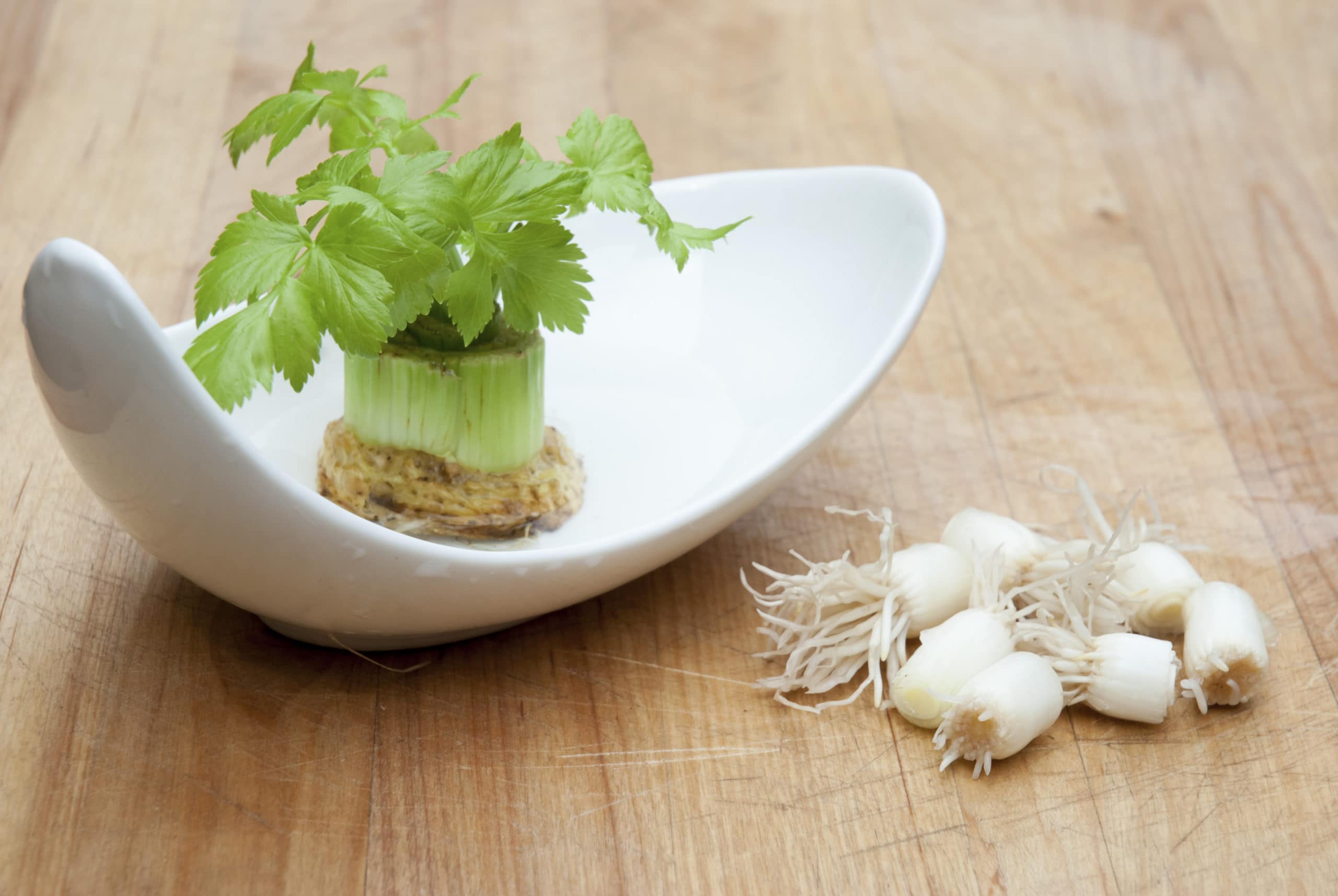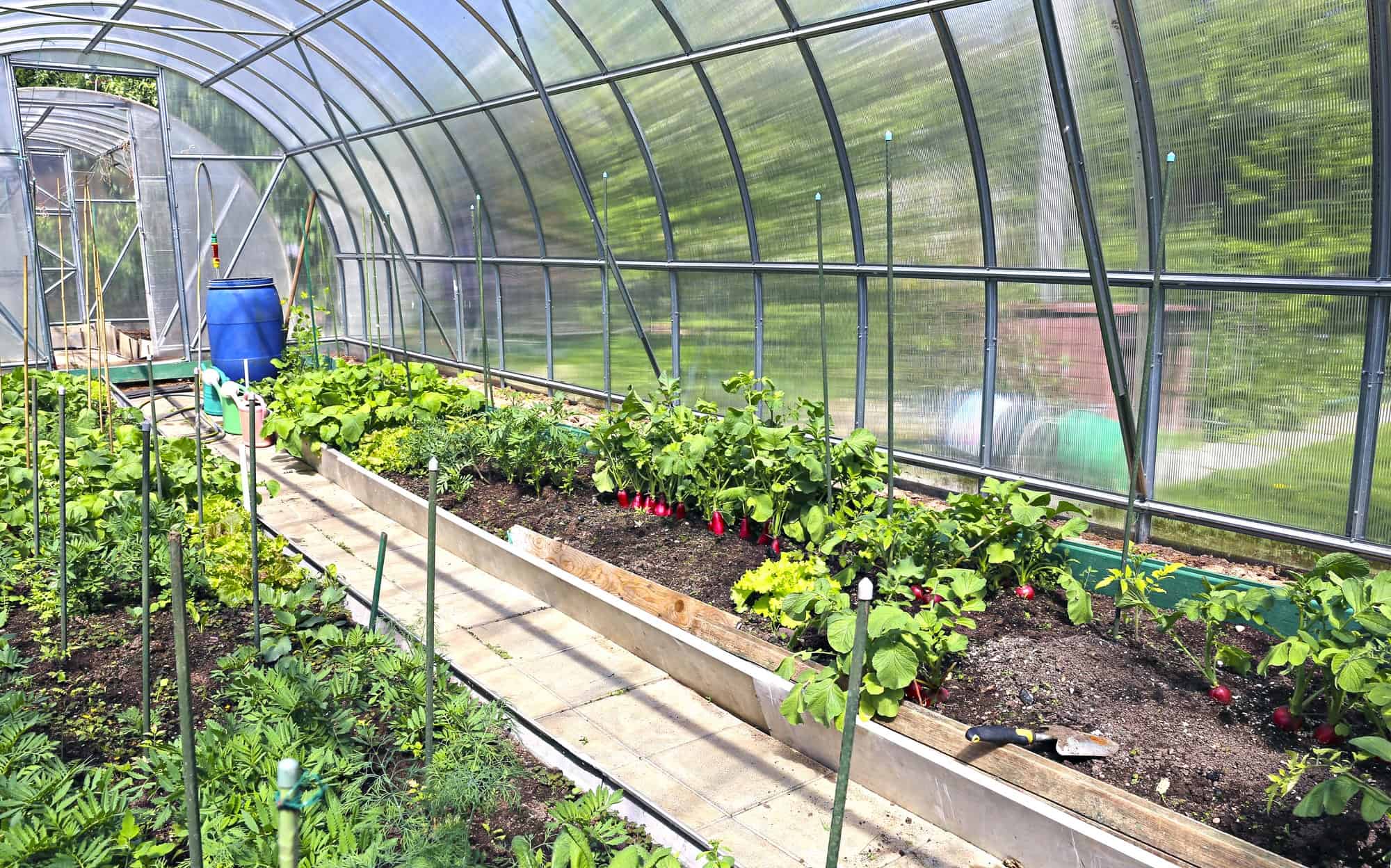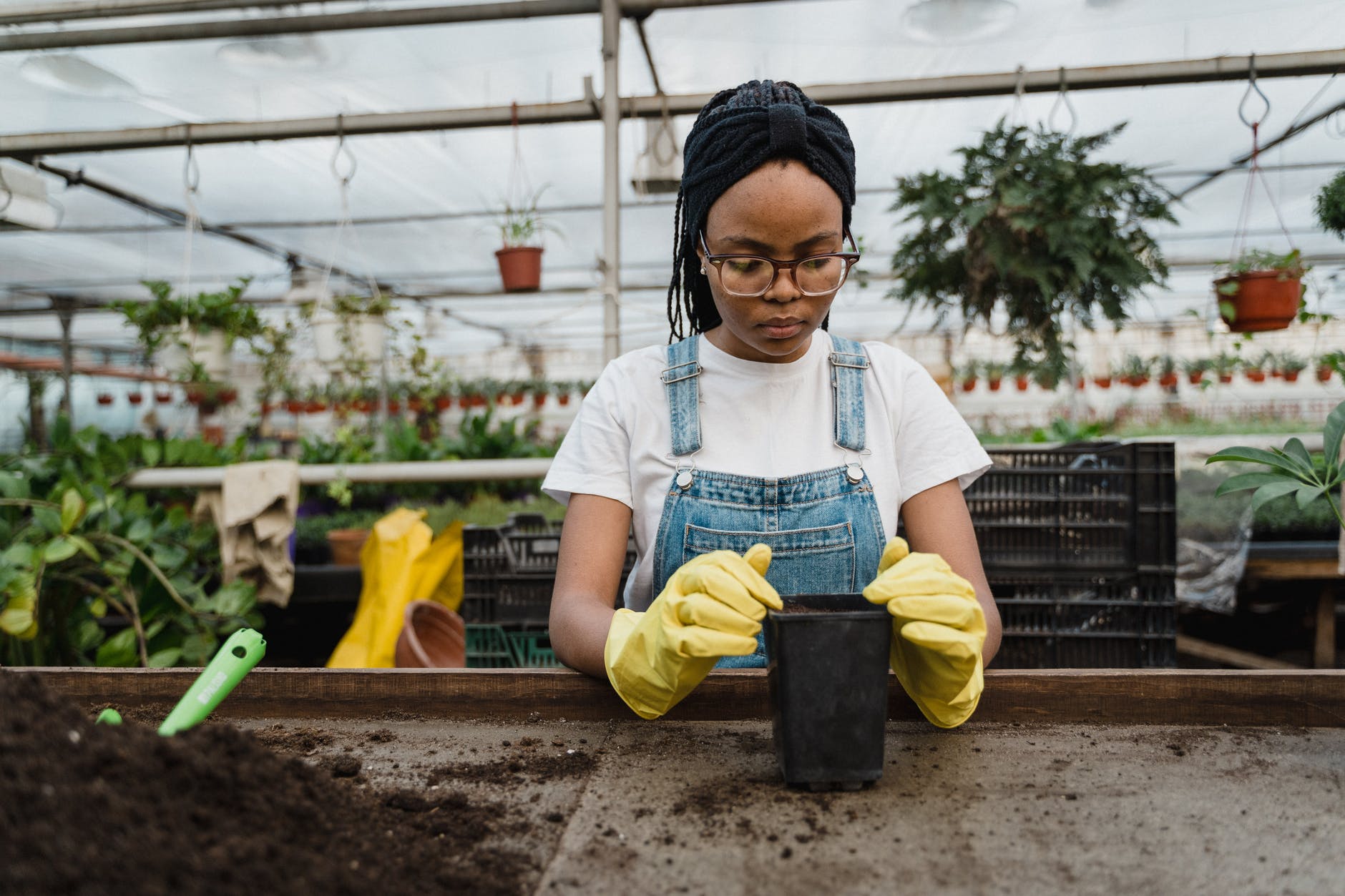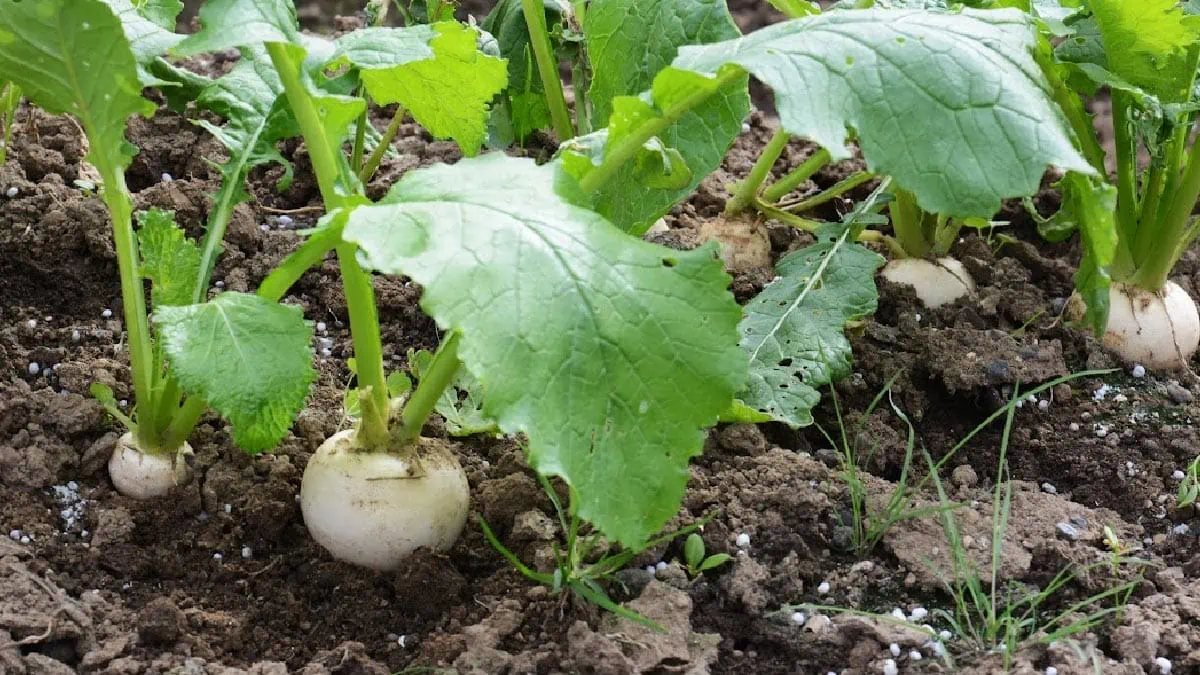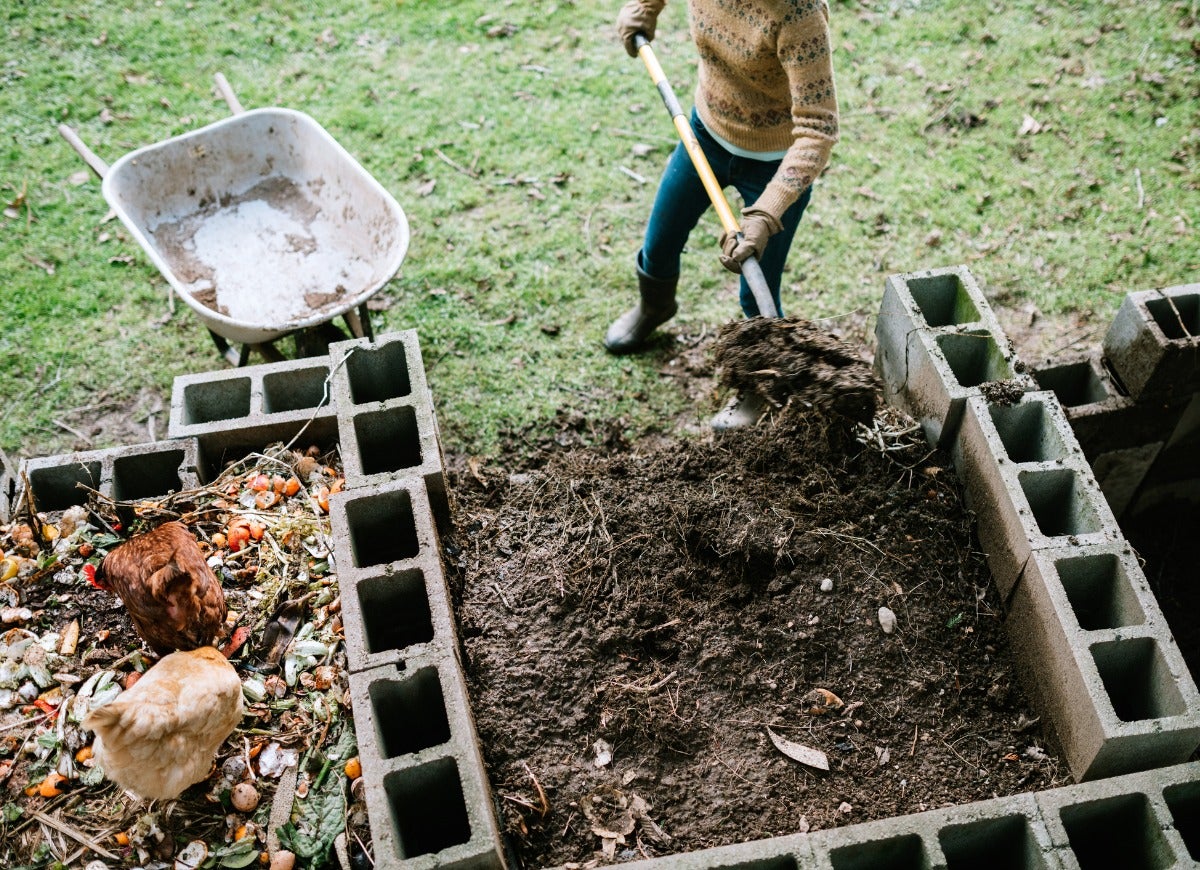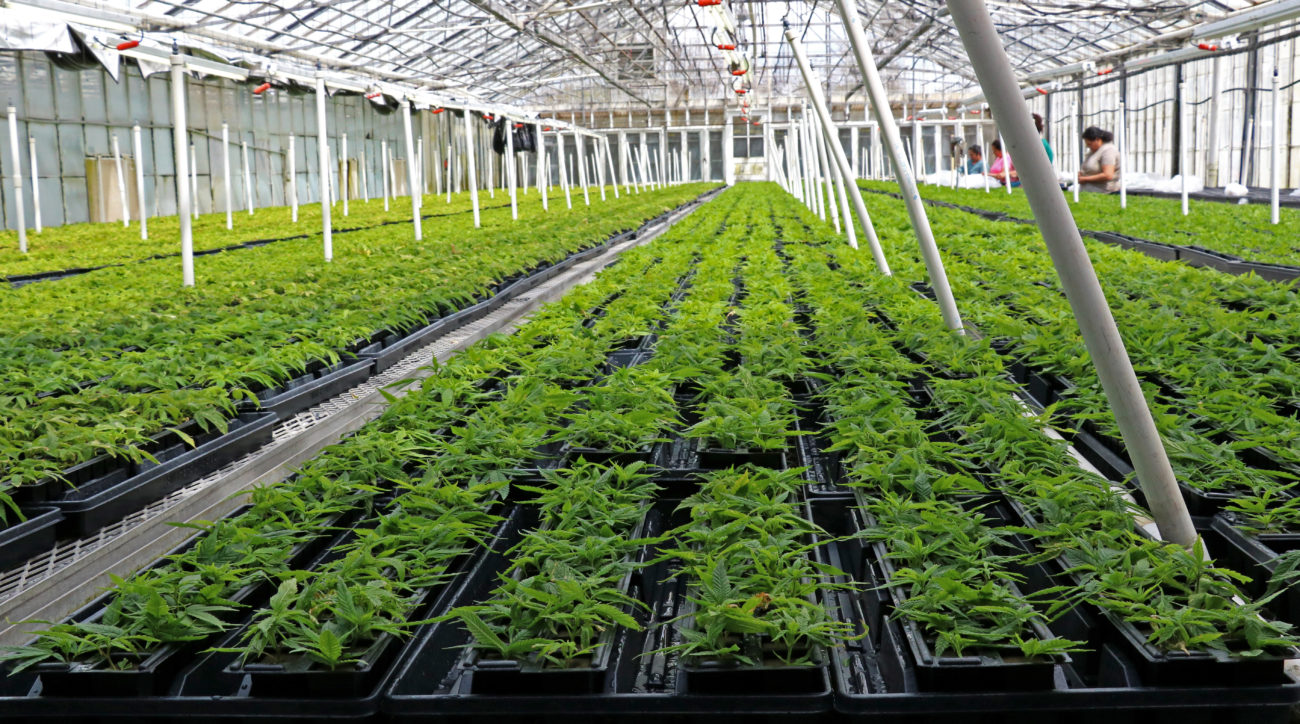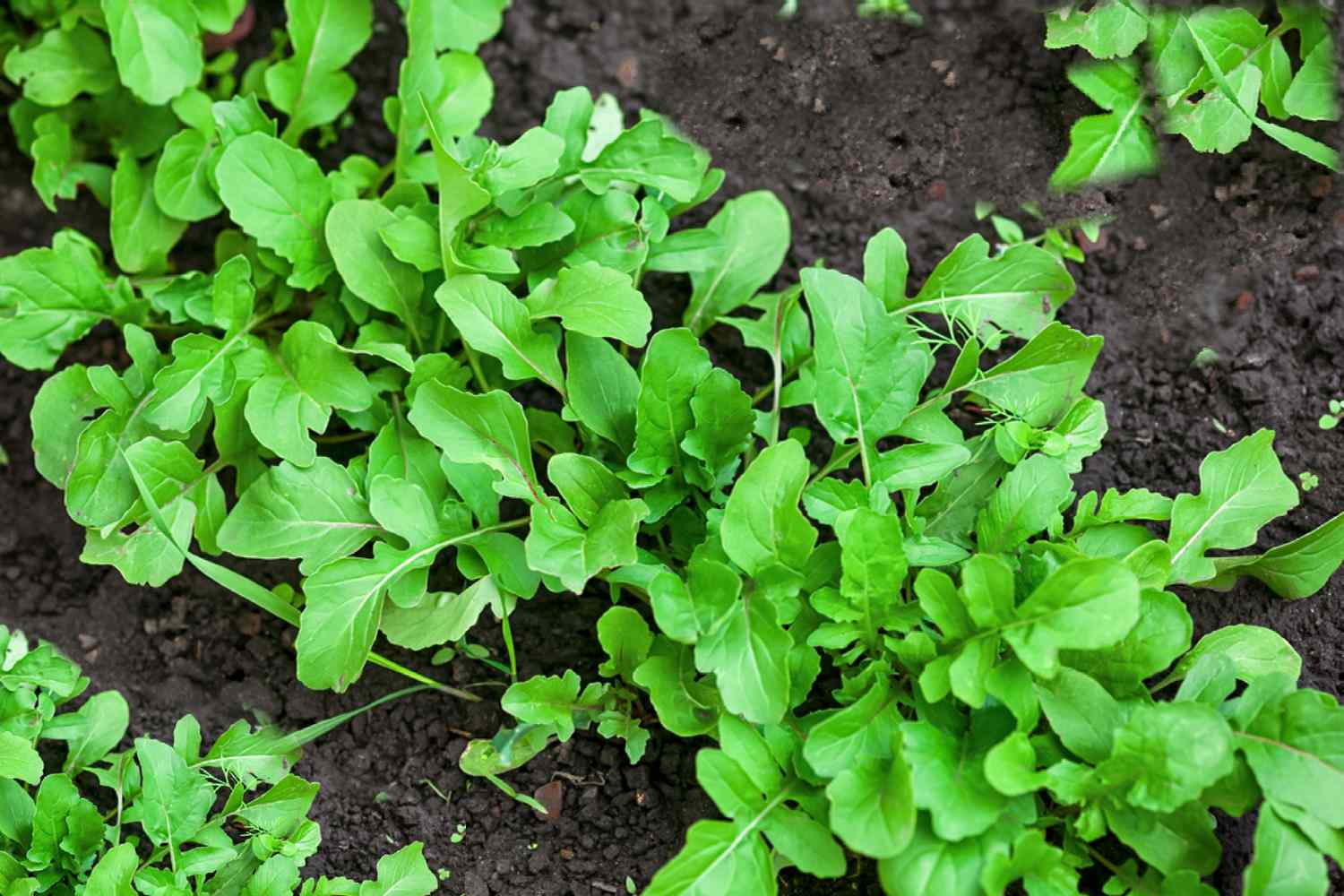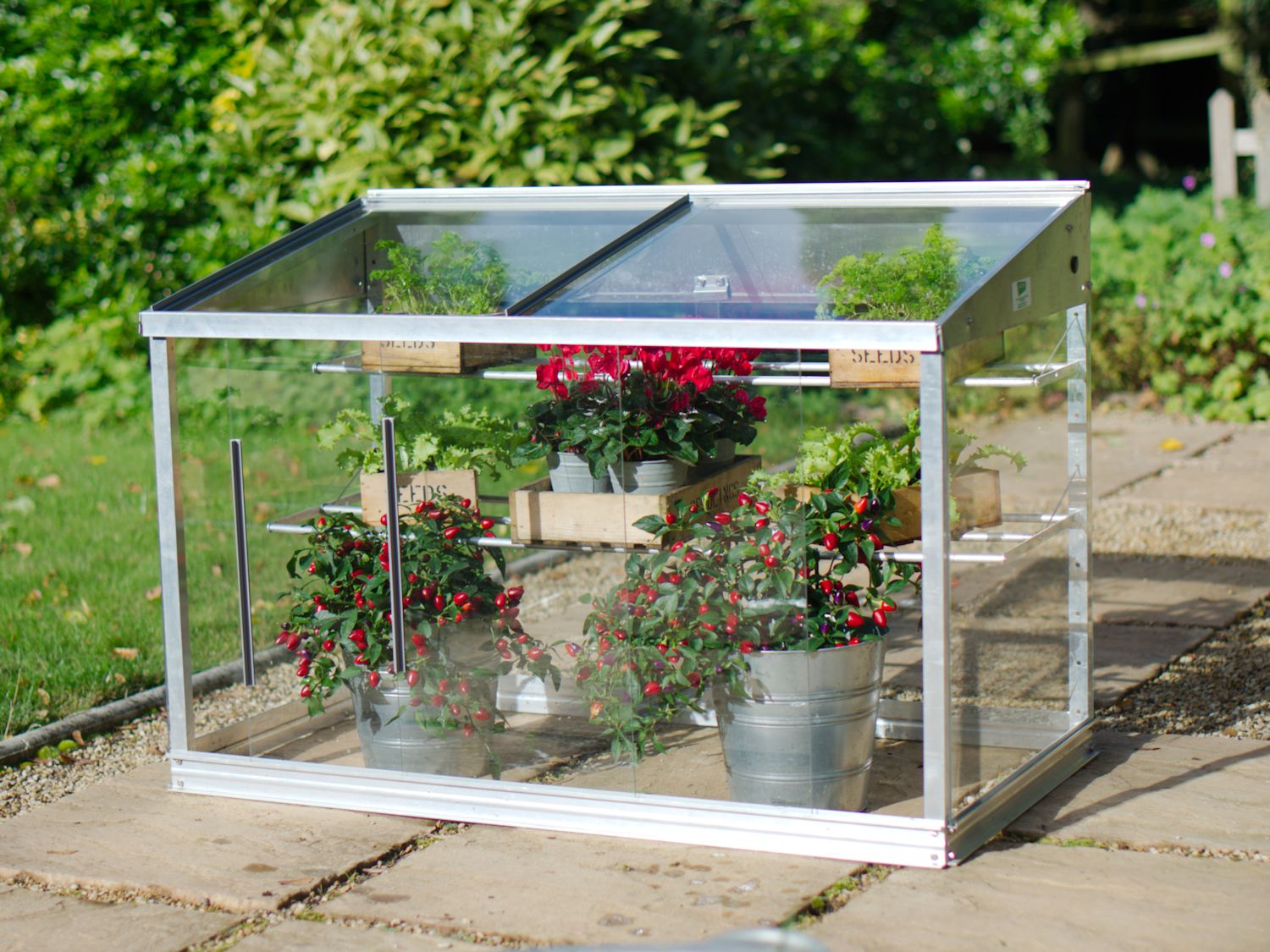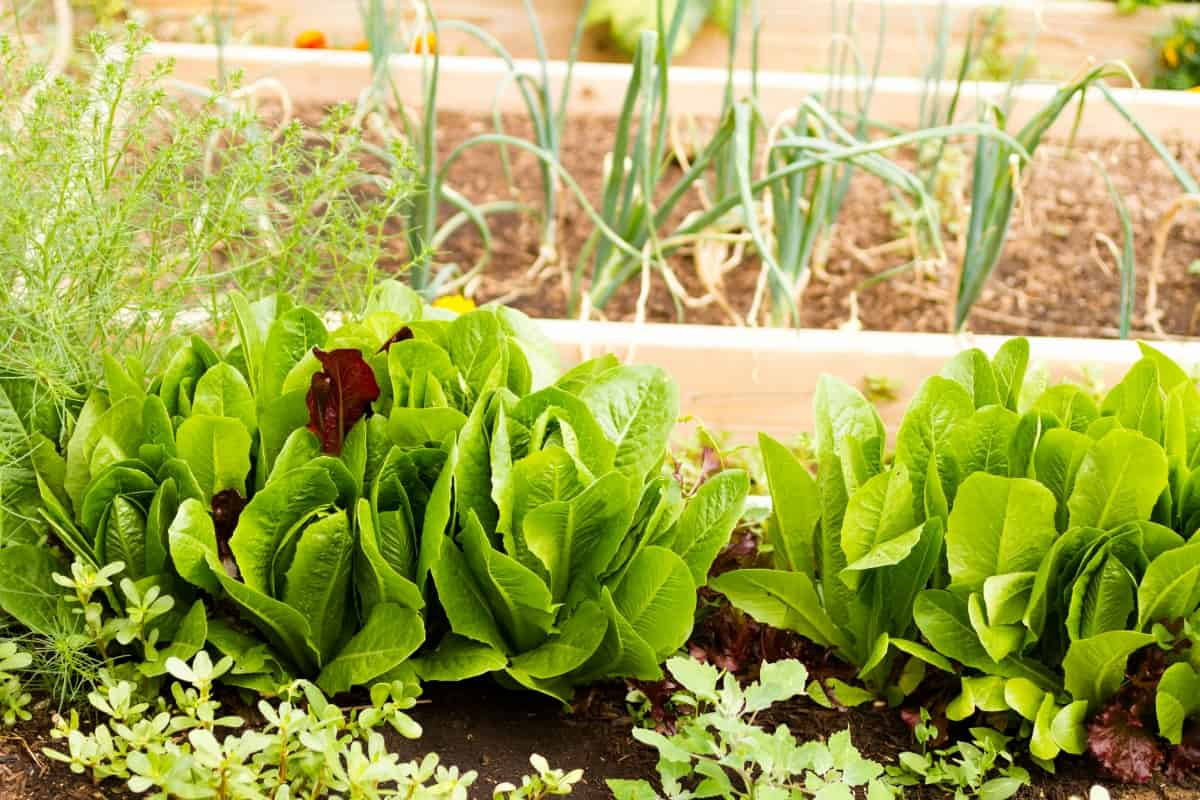Home>Gardening Tips and Tricks>Eco-Friendly Gardening>How To Grow Vegetables In Greenhouse


Eco-Friendly Gardening
How To Grow Vegetables In Greenhouse
Modified: January 22, 2024
Discover eco-friendly gardening techniques and learn how to successfully grow vegetables in a greenhouse. Create a sustainable garden with our helpful tips and advice.
(Many of the links in this article redirect to a specific reviewed product. Your purchase of these products through affiliate links helps to generate commission for Chicagolandgardening.com, at no extra cost. Learn more)
Table of Contents
- Introduction
- Benefits of Growing Vegetables in a Greenhouse
- Choosing the Right Greenhouse for Vegetable Production
- Selecting the Best Vegetables for Greenhouse Cultivation
- Preparing the Greenhouse for Vegetable Growing
- Providing Optimal Temperature and Humidity Levels
- Irrigation and Watering Techniques for Greenhouse Vegetables
- Nutrient Management and Fertilization in Greenhouses
- Pest and Disease Control in Greenhouse Vegetable Production
- Harvesting and Storing Greenhouse-Grown Vegetables
- Conclusion
Introduction
Welcome to the world of eco-friendly gardening! Whether you’re an experienced gardener or just starting out, growing vegetables in a greenhouse is a fantastic way to enjoy fresh produce year-round while minimizing your environmental impact. In this article, we will explore the benefits of greenhouse gardening, provide tips on choosing the right greenhouse, selecting suitable vegetables, and offer guidance on proper greenhouse management techniques.
Gardening in a greenhouse offers numerous advantages over traditional outdoor gardening. One significant benefit is the ability to extend the growing season, allowing you to harvest vegetables even during colder months. Additionally, you have greater control over environmental factors such as temperature, humidity, and lighting, which can significantly enhance the growth and productivity of your plants.
By growing your own vegetables in a greenhouse, you have the power to reduce your reliance on store-bought produce, thereby decreasing your carbon footprint. You can also ensure that your vegetables are grown organically, free from harmful pesticides and chemicals, promoting a healthier and more sustainable lifestyle.
Whether you have limited space in your backyard or live in an apartment with no outdoor space, a greenhouse provides a solution. With a small greenhouse, you can still enjoy the benefits of gardening and have access to fresh vegetables, even in urban environments. So, even if you don’t have a vast garden, you can still embark on your journey of eco-friendly vegetable production.
In the following sections, we will delve deeper into the specifics of greenhouse vegetable gardening. From choosing the right greenhouse to understanding the best practices for irrigation, fertilization, and pest control, this comprehensive guide will equip you with the knowledge you need to successfully grow your own vegetables in a sustainable and environmentally friendly manner.
Benefits of Growing Vegetables in a Greenhouse
Growing vegetables in a greenhouse offers a multitude of benefits that make it an attractive option for eco-friendly gardening enthusiasts. Here are some of the key advantages:
- Extended Growing Season: One of the most significant benefits of a greenhouse is the ability to extend the growing season. By controlling the environmental factors, such as temperature and humidity, you can create an optimal growing environment for your vegetables, allowing you to produce fresh and healthy crops even during colder months.
- Protection from Extreme Weather: Greenhouses provide shelter from extreme weather conditions, such as heavy rain, frost, and hail. This protection safeguards your plants against damage and prevents yield losses, ensuring a consistent supply of homegrown vegetables throughout the year.
- Control over Environmental Factors: In a greenhouse, you have full control over the environmental factors that affect plant growth. You can adjust the temperature, humidity, and lighting to create the ideal conditions for your vegetables, maximizing their growth potential and overall productivity.
- Year-round Harvests: With a greenhouse, you can enjoy a continuous harvest of fresh vegetables all year round. This allows you to enjoy your favorite produce whenever you desire and reduces your dependence on store-bought vegetables, which are often shipped from long distances and may be exposed to pesticides and chemicals.
- Increased Plant Health: Greenhouses provide a barrier against pests, diseases, and weeds, which can wreak havoc on outdoor vegetable gardens. By creating a controlled environment, you can minimize the risk of infestations and diseases, leading to healthier and more robust plants.
- Sustainable Gardening: Growing your own vegetables in a greenhouse promotes sustainability, as it reduces the need for transportation, packaging, and chemical inputs associated with store-bought produce. By adopting eco-friendly gardening practices, you contribute to a greener environment and a healthier planet.
These are just a few of the many benefits of growing vegetables in a greenhouse. Whether you’re passionate about sustainable living, want to have a year-round supply of fresh produce, or enjoy the thrill of nurturing your plants, a greenhouse offers a versatile and practical solution for eco-friendly gardening.
Choosing the Right Greenhouse for Vegetable Production
When it comes to greenhouse vegetable gardening, selecting the right greenhouse is crucial for creating an optimal growing environment. Consider the following factors before making your choice:
- Size and Space: Assess your available space and determine the size of greenhouse you need. Consider not only the dimensions of the greenhouse itself but also the space required for walkways, working areas, and storage. Ensure that the greenhouse can accommodate the number of vegetables you wish to grow.
- Materials and Construction: Greenhouses are typically constructed using a variety of materials, including glass, polycarbonate, and polyethylene. Each material has its advantages and disadvantages in terms of durability, insulation, light transmission, and cost. Choose a material that aligns with your budget and the specific needs of your vegetable crops.
- Lighting: Adequate light is essential for vegetable growth. Select a greenhouse design that allows maximum light penetration to ensure the optimal development of your plants. Consider features such as clear or double-layered glazing and roof options that maximize natural light while minimizing heat buildup.
- Ventilation: Proper air circulation is crucial in a greenhouse to regulate temperature, control humidity, and prevent the buildup of diseases. Look for a greenhouse with sufficient vents, windows, or exhaust fans that can be opened and closed as needed to maintain optimal growing conditions.
- Insulation and Energy Efficiency: Depending on your climate, insulation can be a critical factor in greenhouse vegetable production. Insulated greenhouses help maintain stable temperatures, reduce energy costs, and protect your plants from extreme weather conditions. Consider the insulation materials used in the greenhouse walls, roof, and floor.
- Accessibility and Ease of Use: Ensure that the greenhouse design allows for easy access to your plants for tasks such as planting, harvesting, and maintenance. Consider features such as wide doorways, raised beds, and adjustable shelves or benches to facilitate comfortable working conditions.
- Budget and Longevity: Determine your budget for a greenhouse and find a balance between cost and quality. Evaluate the longevity of the greenhouse structure and consider factors such as warranties, durability, and the potential for future expansion or customization.
By carefully considering these factors, you can choose a greenhouse that best suits your needs and provides an optimal environment for growing healthy and productive vegetable crops. Remember, the right greenhouse can make a significant difference in the success of your eco-friendly gardening venture.
Selecting the Best Vegetables for Greenhouse Cultivation
Choosing the right vegetables for greenhouse cultivation is essential to ensure successful growth and high yields. While most vegetables can be grown in a greenhouse, some are better suited for the controlled environment of a greenhouse. Consider the following factors when selecting vegetables for your greenhouse:
- Temperature and Light Requirements: Different vegetables have varying temperature and light requirements. Select vegetables that thrive in the temperature range your greenhouse can provide. Also, consider the natural light availability in your greenhouse and choose vegetables that can grow well under those lighting conditions.
- Growth Habits and Space: Take into account the growth habits of different vegetables and their space requirements. Some vegetables, such as tomatoes and cucumbers, require trellising or support systems to grow vertically, while others, like leafy greens, can be grown in smaller containers or raised beds.
- Harvest Time: Consider the length of the growing season and the time it takes for the vegetables to mature. Choose vegetables that have a shorter maturity period, especially if you want to have a continuous harvest throughout the year.
- Pest and Disease Resistance: Some vegetables are more prone to pests and diseases than others. Consider selecting varieties that have built-in resistance to common pests and diseases, or those that are less susceptible to issues commonly found in greenhouse settings.
- Market Demand and Personal Preferences: Consider the market demand for different vegetables in your area and choose vegetables that are in high demand. Also, select vegetables that you and your family enjoy eating, as you will be more motivated and invested in their cultivation.
- Success Rate and Ease of Cultivation: If you’re new to greenhouse gardening, it’s advisable to start with vegetables that are easier to grow and have a higher success rate. Radishes, lettuce, and herbs, for example, are relatively easy to cultivate and provide quick harvests.
- Crop Rotation: To maintain soil health and reduce the risk of diseases, employ a crop rotation strategy in your greenhouse. Choose vegetables that are part of different plant families and rotate them annually or seasonally to prevent the buildup of pests and diseases in the soil.
Remember to experiment and try different vegetables in your greenhouse to find out what works best for your specific conditions. Each greenhouse is unique, and you may need to adjust your selection based on factors such as climate, available space, and personal preferences. Happy greenhouse vegetable growing!
Preparing the Greenhouse for Vegetable Growing
Proper preparation of the greenhouse is essential to create an ideal environment for vegetable cultivation. Follow these steps to ensure your greenhouse is ready for successful and productive vegetable growing:
- Clean and Disinfect: Start by thoroughly cleaning your greenhouse, removing any debris, weeds, or old plant material. Disinfect all surfaces, including the walls, benches, and equipment, to minimize the risk of pests and diseases.
- Evaluate and Repair: Inspect the greenhouse for any structural damages or leaks. Repair or replace broken windows, damaged doors, and malfunctioning ventilation systems. Ensure that the greenhouse is well-sealed to maintain temperature and humidity control.
- Improve Drainage: Proper drainage is crucial in a greenhouse to prevent waterlogging and root diseases. Check the drainage systems and ensure they are clear and functioning efficiently. If necessary, improve the drainage by adding gravel or installing drainage tiles.
- Prepare the Soil: If you’re growing plants directly in the ground, prepare the soil by removing weeds, adding organic matter, and ensuring proper fertility levels. Test the soil for pH and nutrient content and make any necessary adjustments to create an optimal growing medium.
- Choose Growing Containers: If you’re using containers for your vegetables, select appropriate pots or raised beds. Ensure they have drainage holes to avoid waterlogged roots. Clean and sanitize containers before use to prevent the spread of diseases.
- Install Benches and Shelves: Consider adding benches or shelves in your greenhouse to maximize space utilization and ease of maintenance. Ensure they are sturdy enough to hold the weight of the vegetables and provide adequate airflow around the plants.
- Set up Trellises and Supports: If you’re growing vining vegetables such as tomatoes or cucumbers, install trellises or support systems to train the plants vertically. This helps to optimize space and improves airflow, reducing the risk of diseases.
- Provide Adequate Lighting: Assess the natural light conditions in your greenhouse and supplement with artificial lighting if necessary. Choose full-spectrum LED grow lights that mimic sunlight and provide the necessary wavelengths for optimal plant growth.
- Organize Essential Tools and Supplies: Arrange all the tools and supplies you will need for greenhouse vegetable gardening. This includes gardening tools, watering cans or irrigation systems, fertilizers, organic pest control methods, and any other materials specific to your cultivation preferences.
By taking the time to properly prepare your greenhouse, you set the stage for a successful growing season. Creating a clean, well-maintained, and optimized environment contributes to healthy plants that can flourish and provide you with bountiful harvests of fresh, homegrown vegetables.
Providing Optimal Temperature and Humidity Levels
Temperature and humidity are crucial factors in greenhouse vegetable production, as they directly impact plant growth and overall productivity. Maintaining optimal levels of temperature and humidity is key to ensuring the success of your vegetable garden. Here are some tips to achieve the right balance:
- Monitoring and Control: Regularly monitor the temperature and humidity levels inside your greenhouse using a thermometer and hygrometer. Install a greenhouse controller or use manual adjustments to maintain the desired conditions.
- Temperature: Most vegetables thrive in temperatures between 60°F (15°C) to 75°F (24°C) during the day and slightly cooler at night. However, different vegetables have specific temperature preferences. Adjust your greenhouse heating or cooling systems accordingly to maintain the ideal temperature range for your crops.
- Heating: During colder months, use heating systems such as radiant heaters, forced-air heaters, or soil heating cables to maintain the temperature inside the greenhouse. Ensure proper ventilation to prevent overheating and excess humidity buildup.
- Cooling: In warmer weather, use exhaust fans, vents, or evaporative cooling systems to reduce the temperature inside the greenhouse. Adequate airflow and shading can also help to keep temperatures within the desired range for optimal vegetable growth.
- Humidity: Most greenhouse vegetables prefer humidity levels between 40% and 60%. However, some vegetables, such as tropical plants or leafy greens, may require higher humidity levels. Use misting systems, humidifiers, or wetting the greenhouse floor to increase humidity if necessary. In contrast, using ventilation or dehumidifiers can help reduce excessive humidity.
- Avoiding Temperature and Humidity Extremes: Extreme temperature or humidity levels can stress plants and hinder their growth. Regularly monitor your greenhouse conditions and take immediate action to correct any deviations from the optimal range to maintain a stable growing environment.
- Shade and Insulation: Use shading materials such as shade cloths or greenhouse films to prevent excessive heat buildup during intense sunlight. Insulate your greenhouse during cold seasons to retain heat and minimize temperature fluctuations.
- Water Management: Proper watering practices can help manage humidity levels. Avoid overwatering, as it can lead to excess humidity and promote the growth of diseases. Use proper irrigation techniques such as drip irrigation or bottom watering to provide adequate moisture to the plants without saturating the greenhouse atmosphere.
Remember that different vegetables may have specific temperature and humidity requirements, so it’s important to research the needs of the specific crops you’re growing. Providing optimal temperature and humidity levels in your greenhouse will create a conducive environment for your vegetables to thrive and produce a bountiful harvest.
Irrigation and Watering Techniques for Greenhouse Vegetables
Proper irrigation is essential for greenhouse vegetable production to ensure that plants receive adequate water for optimum growth and development. Here are some techniques to help you effectively manage irrigation and watering in your greenhouse:
- Determine Water Needs: Understand the water requirements of different vegetable crops you are growing in your greenhouse. Factors such as stage of growth, temperature, humidity, and soil type influence how much water plants need.
- Choose the Right Irrigation System: Select an irrigation system based on the size of your greenhouse, the number of plants, and the water requirements of your crops. Common options include drip irrigation, overhead sprinklers, or a combination of both.
- Drip Irrigation: Drip irrigation is one of the most efficient watering methods for greenhouse vegetables. It delivers water directly to the plant roots, reducing water wastage and minimizing the risk of diseases caused by wet foliage. Use emitters or drip tapes placed strategically around the plants to deliver water slowly and evenly.
- Overhead Sprinklers: Overhead sprinklers can be used for certain greenhouse crops that benefit from overhead watering. However, be cautious to avoid wetting the foliage excessively, which can lead to diseases. Ensure uniform coverage and adjust the water pressure to prevent damage to delicate plants.
- Capillary Mats: Capillary mats are another option for watering greenhouse vegetables. They work by soaking up water from a reservoir underneath and allowing plants to draw up water through the mats as needed. This method provides a consistent supply of water to the roots.
- Watering Frequency and Timing: Water plants when the soil is partially dry to avoid overwatering or underwatering. Monitor soil moisture levels regularly and adjust watering frequency accordingly. Early morning or late afternoon is the best time to water, as it allows foliage to dry before evening, reducing the risk of diseases.
- Mulching: Applying organic mulch around your greenhouse vegetables helps conserve moisture by reducing evaporation and suppressing weed growth. Mulch also helps maintain consistent soil temperature and protects the roots from temperature fluctuations.
- Monitor Drainage: Ensure proper drainage in the greenhouse to prevent waterlogging, which can lead to root rot and other plant diseases. Improve drainage by using well-draining soil mixes, incorporating perlite or vermiculite, or raising containers or beds to allow excess water to drain away.
- Water Quality: Pay attention to the quality of the water you use for irrigation. Avoid using water that is high in salts, chlorine, or other harmful chemicals. Consider installing a filtration or water treatment system to ensure the water is suitable for your plants.
Remember, the goal of irrigation is to provide your greenhouse vegetables with the right amount of water at the right time. By implementing proper irrigation and watering techniques, you can promote healthy plant growth, minimize water waste, and optimize the productivity of your greenhouse vegetable garden.
Nutrient Management and Fertilization in Greenhouses
Proper nutrient management is a critical aspect of greenhouse vegetable production, as it ensures healthy plant growth, improves yield, and maintains overall plant vigor. Here are some guidelines for effective nutrient management and fertilization in your greenhouse:
- Soil Testing: Start by conducting a soil test to determine the nutrient levels and pH of your greenhouse soil. This will help you identify any deficiencies or imbalances that need to be addressed through fertilization.
- Choose the Right Fertilizer: Select a balanced fertilizer that provides essential macro and micronutrients required by your vegetable crops. Consider using controlled-release fertilizers or organic fertilizers to provide a slow and steady supply of nutrients.
- Fertilizer Application: Follow the recommended fertilizer application rates and techniques specified for your vegetable crops. Apply fertilizers evenly across the greenhouse bed or container, and ensure they are incorporated into the soil for proper root uptake.
- Timing of Fertilization: The timing of fertilizer application is crucial. Most greenhouse vegetables benefit from regular fertilization throughout their growth cycle. Split large fertilizer applications into smaller, more frequent doses to promote consistent nutrient availability.
- Consider Nutrient Solutions: For hydroponic or soilless greenhouse systems, consider using nutrient solutions formulated specifically for hydroponic cultivation. Nutrient solutions provide precise control over nutrient ratios and ensure plants receive the right balance of nutrients at all times.
- Monitor Nutrient Levels: Regularly monitor nutrient levels in your greenhouse through tissue or solution testing. This will help you identify any nutrient deficiencies or excesses and allow you to make timely adjustments to your fertilization program.
- Supplement with Organic Matter: Incorporate organic matter, such as compost or well-rotted manure, into your greenhouse soil. Organic matter improves soil structure, enhances nutrient retention, and promotes beneficial microbial activity.
- Consider Foliar Feeding: Foliar feeding involves applying liquid fertilizers directly to the leaves of the plants. This can be a useful technique for quickly correcting specific nutrient deficiencies. However, it should not be the primary source of nutrient supply.
- Manage pH Levels: Maintain proper pH levels in your greenhouse soil or nutrient solution. Most greenhouse vegetables prefer slightly acidic to neutral pH levels (around 6 to 7). Adjust the pH as needed using appropriate amendments to ensure optimum nutrient availability and uptake.
- Avoid Overfertilization: Overfertilization can be detrimental to greenhouse vegetables, leading to nutrient imbalances, salt buildup in the soil, and environmental pollution. Always follow recommended fertilizer rates and avoid applying more than necessary.
Remember, each greenhouse vegetable may have specific nutrient requirements, so it’s important to understand the needs of the crops you’re growing. Proper nutrient management and fertilization in your greenhouse will support healthy plant growth, enhance nutrient uptake, and contribute to the overall success of your vegetable garden.
Pest and Disease Control in Greenhouse Vegetable Production
Pest and disease management is crucial for maintaining the health and productivity of greenhouse vegetable crops. The controlled environment of a greenhouse can create favorable conditions for pests and diseases to thrive. Here are some strategies to effectively control pests and diseases in your greenhouse vegetable production:
- Monitor Regularly: Conduct regular inspections to identify any signs of pest infestations or disease symptoms. Early detection allows for prompt action, minimizing potential damage to your crops.
- Integrated Pest Management (IPM): Implement an IPM approach that combines various pest control methods while minimizing the use of chemical pesticides. IPM focuses on prevention, monitoring, cultural practices, biological controls, and targeted pesticide applications when necessary.
- Sanitation: Keep your greenhouse clean and free of debris to reduce pest and disease harborages. Remove and destroy any diseased plants, fallen foliage, or plant debris promptly. Clean and disinfect tools, containers, and equipment to prevent the spread of pathogens.
- Biological Controls: Introduce beneficial insects, such as ladybugs, lacewings, or parasitic wasps, to control common pests. Biological controls can help reduce pest populations without the use of chemical pesticides. Release predatory mites to control unwanted pests like spider mites or thrips.
- Cultural Practices: Implement cultural practices that discourage pests and diseases. These include proper spacing between plants to promote airflow, removing weeds that may harbor pests, and avoiding overhead irrigation that can create moisture-loving conditions for diseases.
- Physical Barriers: Use physical barriers such as insect nets or screens to exclude pests from entering the greenhouse. This can be particularly effective against flying insects like whiteflies or aphids.
- Selective Pesticide Application: If necessary, use pesticides selectively and responsibly. Identify the specific pest or disease and choose the appropriate pesticide that targets the problem while minimizing harm to beneficial insects and the environment. Always follow label instructions and apply pesticides according to recommended rates and schedules.
- Crop Rotation: Practice crop rotation to disrupt pest and disease cycles. Avoid planting the same vegetable family in the same location year after year to prevent the buildup of specific pests and diseases in the soil.
- Resistant Varieties: Select vegetable varieties that have inherent resistance to common pests or diseases prevalent in your area. Resistant varieties can help reduce the risk of infestations or diseases and minimize the need for chemical interventions.
- Record Keeping: Keep a record of pest and disease occurrences, treatment methods utilized, and their effectiveness. This information will help you make informed decisions in managing future pest or disease outbreaks.
Implementing a proactive pest and disease control program is crucial for greenhouse vegetable production. By practicing regular monitoring, employing integrated pest management strategies, and implementing appropriate control measures, you can protect your crops and maintain a healthy greenhouse environment for sustainable vegetable production.
Harvesting and Storing Greenhouse-Grown Vegetables
Harvesting and proper storage are essential steps in greenhouse vegetable production to ensure the freshness, quality, and longevity of your crops. Follow these guidelines for a successful harvesting and storage process:
- Harvesting Time: Harvest your vegetables at the appropriate stage of maturity. Different vegetables have different signs of readiness, such as color, size, or firmness. Consult seed packets or gardening references to determine the optimal harvest time for each crop.
- Harvesting Techniques: Use clean, sharp tools such as pruners or scissors to make clean cuts when harvesting. Avoid tearing or damaging plants during the harvesting process, as this can lead to open wounds and increase the risk of diseases.
- Handle with Care: Handle harvested vegetables gently to avoid bruising or damaging the produce. Rough handling can lead to spoilage and reduce the shelf life of your vegetables.
- Preparation for Storage: Inspect harvested vegetables and remove any damaged or diseased portions. Cleaning off excess soil or debris can help prevent the spread of diseases. Avoid washing vegetables before storage, as excess moisture can promote mold or spoilage.
- Storage Conditions: Store vegetables in a cool, dry, and well-ventilated area to maintain their freshness. Some vegetables, like tomatoes, peppers, and eggplants, can be stored at room temperature. Others, such as leafy greens or root vegetables, prefer cooler temperatures around 32°F to 40°F (0°C to 4°C).
- Proper Containers: Use appropriate containers for vegetable storage, such as mesh bags, breathable containers, or perforated plastic bags. These containers allow for air circulation, preventing moisture buildup that can lead to rotting.
- Separate Ethylene Producers: Certain vegetables, such as tomatoes, emit ethylene gas, which can accelerate the ripening and spoilage of ethylene-sensitive vegetables like leafy greens or cucumbers. Store ethylene-producing and ethylene-sensitive vegetables separately to prevent premature spoilage.
- Check for Storage Issues: Regularly inspect stored vegetables for signs of rot, mold, or decay. Remove any spoiled vegetables immediately to prevent the spread of rot to other stored produce.
- Use Within Optimal Shelf Life: Consume greenhouse-grown vegetables within their optimal shelf life to enjoy the best flavor and nutritional value. Different vegetables have varying shelf lives, so refer to specific storage recommendations for each crop.
- Preservation Methods: If you have excess produce, consider preservation methods such as blanching and freezing, canning, or pickling. These techniques can prolong the shelf life of your vegetables and allow you to enjoy them even after the growing season has ended.
By following proper harvesting techniques and employing effective storage practices, you can maximize the freshness, quality, and longevity of your greenhouse-grown vegetables. Enjoy the fruits of your labor by savoring the flavors of homegrown produce throughout the year!
Conclusion
Greenhouse vegetable gardening provides a fantastic opportunity for eco-friendly gardeners to enjoy a bountiful harvest of fresh produce year-round. By harnessing the controlled environment of a greenhouse, you can extend the growing season, have greater control over environmental factors, and reduce your reliance on store-bought vegetables.
We explored the benefits of greenhouse gardening, including the ability to grow vegetables in any location, the protection from extreme weather, and the potential for sustainable and organic cultivation. Selecting the right greenhouse and choosing suitable vegetables are essential for success in greenhouse vegetable production. Preparing the greenhouse, providing optimal temperature and humidity levels, and using proper irrigation and nutrient management techniques are key steps in creating a thriving greenhouse ecosystem.
Furthermore, controlling pests and diseases through integrated pest management strategies and practicing proper harvesting and storage techniques ensure the health and longevity of your crops. With diligent care, you can enjoy the flavors, nutritional benefits, and satisfaction of homegrown vegetables straight from your greenhouse.
Greenhouse vegetable gardening is a journey that allows you to connect with nature, reduce your ecological footprint, and have a greater appreciation for sustainable food production. So, roll up your sleeves, get your hands dirty, and embark on the wonderful world of eco-friendly gardening in your greenhouse. Happy growing!
